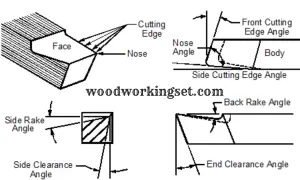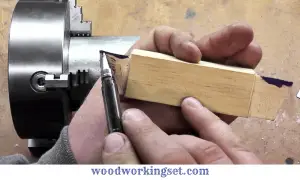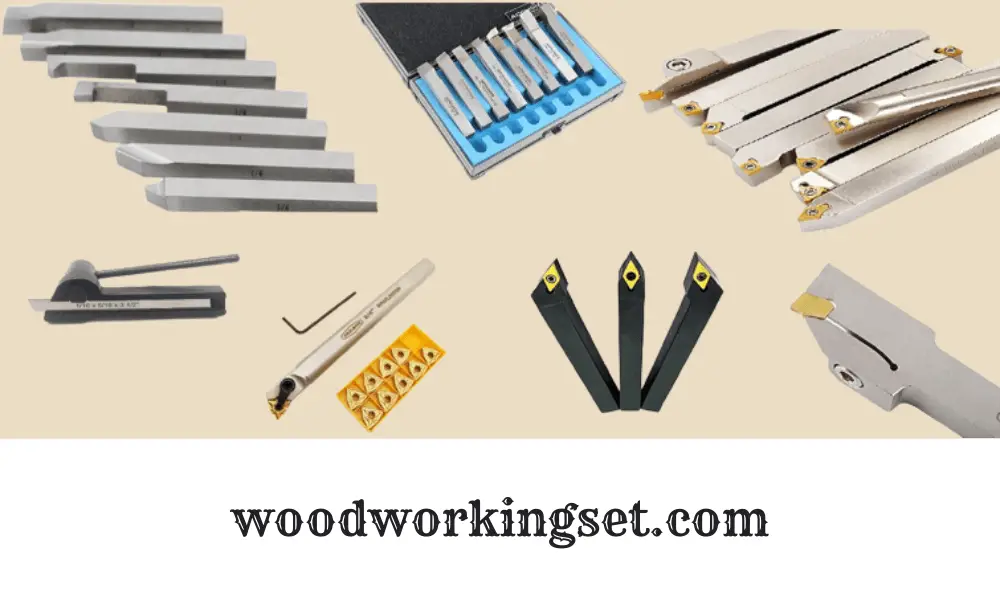What is the process for sharpening carbide lathe tool bits?
Table of Contents
To sharpen carbide lathe tool bits, start by cleaning the bit with a stiff brush and degreaser. Next, use a silicon carbide grinding wheel to shape and sharpen the bit. Finally, use a diamond hone or honing stone to refine the cutting edge and remove any burrs.
Carbide lathe tool bits are widely used in machining applications due to their hardness and durability. In this article, we will explore the process of sharpening carbide lathe tool bits and discuss the various methods and precautions involved.
What is Carbide and Why is it Used in Lathe Tool Bits?
Carbide’s Hardness and Durability
Carbide is a compound composed of carbon and a metallic element, typically tungsten. It is known for its exceptional hardness and durability, making it ideal for use in lathe tool bits. The hardness of carbide allows it to withstand high temperatures and resist wear and tear, enabling it to cut through even the toughest materials with clean cuts.
Benefits of Using Carbide Lathe Tool Bits
Using carbide lathe tool bits offers several benefits. Firstly, carbide bits retain their sharpness for longer than other materials, reducing the need for frequent sharpening. Additionally, carbide tool bits produce smoother cuts and require less force, resulting in improved productivity and reduced machining time. Lastly, carbide bits can be used for various applications, making them versatile tools in the machining industry.
Common Applications of Carbide Cutting Tools
Carbide-cutting tools find extensive use in various applications, including metalworking, woodworking, and automotive industries. They are commonly used for turning, facing, threading, and grooving operations, providing precise and efficient results. Carbide-cutting tools also produce aerospace components, medical devices, and electronic parts.

Understanding the Sharpening Process
What is Carbide and Why is it Used in Lathe Tool Bits?
Carbide’s Hardness and Durability
Carbide is a compound composed of carbon and a metallic element, typically tungsten. It is known for its exceptional hardness and durability, making it ideal for use in lathe tool bits. The hardness of carbide allows it to withstand high temperatures and resist wear and tear, enabling it to cut through even the toughest materials with clean cuts.
Benefits of Using Carbide Lathe Tool Bits
Using carbide lathe tool bits offers several benefits. Firstly, carbide bits retain their sharpness for longer than other materials, reducing the need for frequent sharpening. Additionally, carbide tool bits produce smoother cuts and require less force, resulting in improved productivity and reduced machining time. Lastly, carbide bits can be used for various applications, making them versatile tools in the machining industry.
Common Applications of Carbide Cutting Tools
Carbide-cutting tools find extensive use in various applications, including metalworking, woodworking, and automotive industries. They are commonly used for turning, facing, threading, and grooving operations, providing precise and efficient results. Carbide-cutting tools also produce aerospace components, medical devices, and electronic parts.

Optimizing and Maintaining Sharpened Carbide Bits
Proper Storage and Handling Practices
Proper storage and handling of sharpened carbide bits are crucial for maintaining their sharpness and prolonging their lifespan. Store the bits in a designated storage case or rack to protect them from damage and minimize the risk of accidental injury. Avoid tossing or dropping the bits, as this can damage the cutting edges and compromise their performance.
How to Test the Sharpness of Carbide Lathe Tool Bits
You can perform a simple touch test to test the sharpness of carbide lathe tool bits. Gently touch the cutting edge of the bit with your fingertip. If it feels rough or catches on your skin, it indicates that the bit is still sharp. However, if it feels smooth and does not catch, it may be time to sharpen the bit.
Regular Maintenance to Extend the Life of Carbide Bits
Regular maintenance is essential to extend the life of sharpened carbide bits, including carbide cutters. After each use, clean the bits to remove any dirt, debris, or coolant residue. Inspect the cutting edges for signs of wear or damage and promptly address any issues. Additionally, avoid using excessive force or speeds when machining with the bits, as this can cause premature wear and reduce their lifespan.
By following proper sharpening techniques and maintenance practices, you can ensure that your carbide lathe tool bits remain sharp and provide exceptional cutting performance throughout their lifespan.

